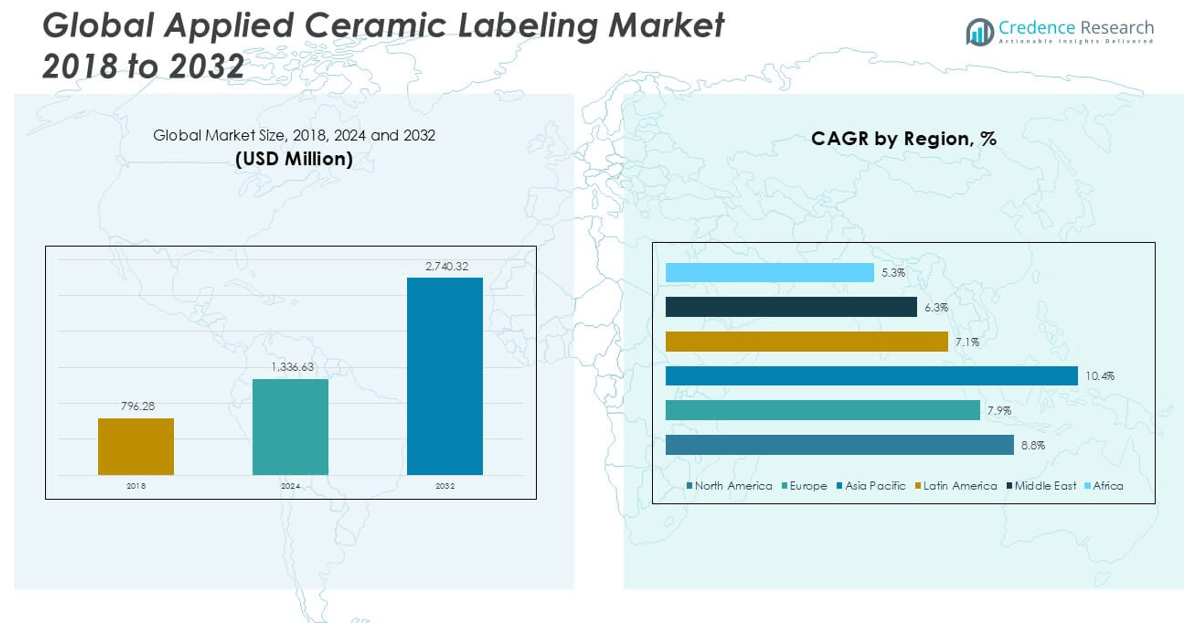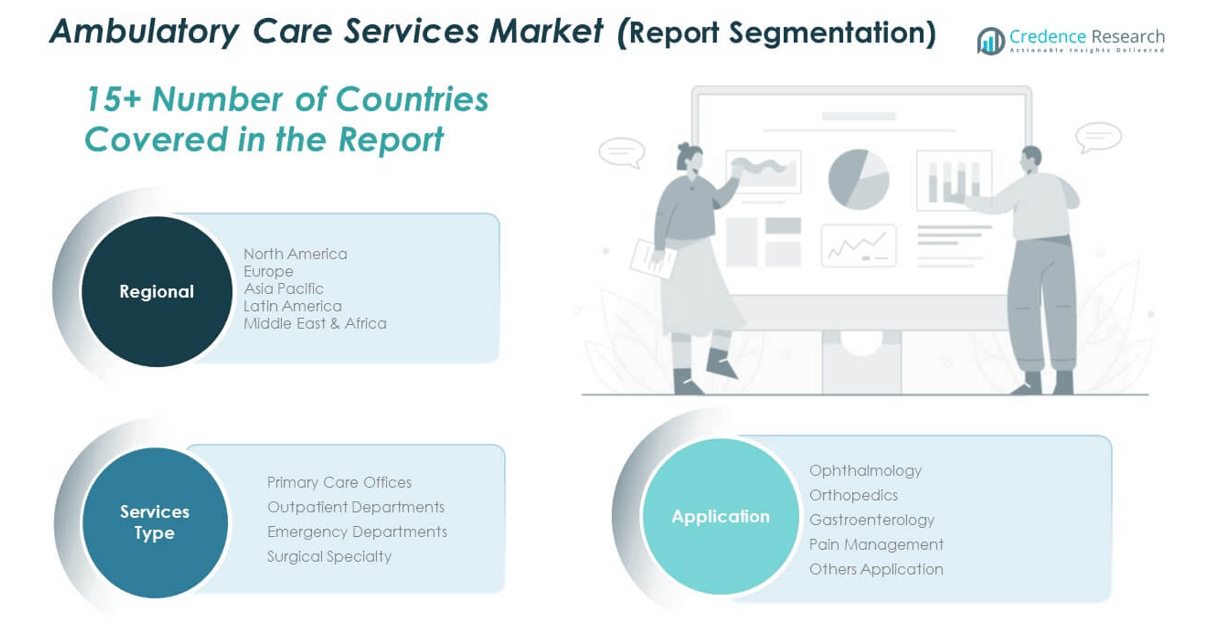CHAPTER NO. 1: GENESIS OF THE MARKET
1.1 Market Prelude – Introduction & Scope
1.2 The Big Picture – Objectives & Vision
1.3 Strategic Edge – Unique Value Proposition
1.4 Stakeholder Compass – Key Beneficiaries
CHAPTER NO. 2: EXECUTIVE LENS
2.1 Pulse of the Industry – Market Snapshot
2.2 Growth Arc – Revenue Projections (USD Million)
2.3. Premium Insights – Based on Primary Interviews
CHAPTER NO. 3: APPLIED CERAMIC LABELING MARKET FORCES & INDUSTRY PULSE
3.1 Foundations of Change – Market Overview
3.2 Catalysts of Expansion – Key Market Drivers
3.2.1 Momentum Boosters – Growth Triggers
3.2.2 Innovation Fuel – Disruptive Technologies
3.3 Headwinds & Crosswinds – Market Restraints
3.3.1 Regulatory Tides – Compliance Challenges
3.3.2 Economic Frictions – Inflationary Pressures
3.4 Untapped Horizons – Growth Potential & Opportunities
3.5 Strategic Navigation – Industry Frameworks
3.5.1 Market Equilibrium – Porter’s Five Forces
3.5.2 Ecosystem Dynamics – Value Chain Analysis
3.5.3 Macro Forces – PESTEL Breakdown
3.6 Price Trend Analysis
3.6.1 Regional Price Trend
3.6.2 Price Trend by Product
CHAPTER NO. 4: KEY INVESTMENT EPICENTER
4.1 Regional Goldmines – High-Growth Geographies
4.2 Product Frontiers – Lucrative Product Categories
4.3 Application Sweet Spots – Emerging Demand Segments
CHAPTER NO. 5: REVENUE TRAJECTORY & WEALTH MAPPING
5.1 Momentum Metrics – Forecast & Growth Curves
5.2 Regional Revenue Footprint – Market Share Insights
5.3 Segmental Wealth Flow – Product Type & End-User Industry Revenue
CHAPTER NO. 6: TRADE & COMMERCE ANALYSIS
6.1. Import Analysis by Region
6.1.1. Global Applied Ceramic Labeling Import Revenue By Region
6.2. Export Analysis by Region
6.2.1. Global Applied Ceramic Labeling Export Revenue By Region
CHAPTER NO. 7: COMPETITION ANALYSIS
7.1. Company Market Share Analysis
7.1.1. Global Applied Ceramic Labeling: Company Market Share
7.2. Global Applied Ceramic Labeling Company Revenue Market Share
7.3. Strategic Developments
7.3.1. Acquisitions & Mergers
7.3.2. New Product Type Launch
7.3.3. Regional Expansion
7.4. Competitive Dashboard
7.5. Company Assessment Metrics, 2024
CHAPTER NO. 8: APPLIED CERAMIC LABELING MARKET – BY PRODUCT TYPE SEGMENT ANALYSIS
8.1. Applied Ceramic Labeling Overview by Product Type Segment
8.1.1. Applied Ceramic Labeling Revenue Share By Product Type
8.2. Pressure-Sensitive Labels
8.3. Heat-Shrink Labels
8.4. In-Mold Labels
8.5. Laser Engraved Labels
CHAPTER NO. 9: APPLIED CERAMIC LABELING MARKET – BY PRINTING TECHNIQUE SEGMENT ANALYSIS
9.1. Applied Ceramic Labeling Overview by Printing Technique Segment
9.1.1. Applied Ceramic Labeling Revenue Share By Printing Technique
9.2. Multicolor Printing
9.3. Embossing Printing
9.4. Digital Printing
9.5. Laser Etching
CHAPTER NO. 10: APPLIED CERAMIC LABELING MARKET – BY END-USER INDUSTRY SEGMENT ANALYSIS
10.1. Applied Ceramic Labeling Overview by End-User Industry Segment
10.1.1. Applied Ceramic Labeling Revenue Share By End-User Industry
10.2. Food and Beverage
10.3. Pharmaceutical
10.4. Consumer Goods
10.5. Automotive
10.6. Electronics
CHAPTER NO. 11: APPLIED CERAMIC LABELING MARKET – REGIONAL ANALYSIS
11.1. Applied Ceramic Labeling Overview by Region Segment
11.1.1. Global Applied Ceramic Labeling Revenue Share By Region
11.1.2. Regions
11.1.3. Global Applied Ceramic Labeling Revenue By Region
11.1.4. Product Type
11.1.5. Global Applied Ceramic Labeling Revenue By Product Type
11.1.6. Printing Technique
11.1.7. Global Applied Ceramic Labeling Revenue By Printing Technique
11.1.8. End-User Industry
11.1.9. Global Applied Ceramic Labeling Revenue By End-User Industry
CHAPTER NO. 12: NORTH AMERICA APPLIED CERAMIC LABELING MARKET – COUNTRY ANALYSIS
12.1. North America Applied Ceramic Labeling Overview by Country Segment
12.1.1. North America Applied Ceramic Labeling Revenue Share By Region
12.2. North America
12.2.1. North America Applied Ceramic Labeling Revenue By Country
12.2.2. Product Type
12.2.3. North America Applied Ceramic Labeling Revenue By Product Type
12.2.4. Printing Technique
12.2.5. North America Applied Ceramic Labeling Revenue By Printing Technique
12.2.6. End-User Industry
12.2.7. North America Applied Ceramic Labeling Revenue By End-User Industry
2.3. U.S.
12.4. Canada
12.5. Mexico
CHAPTER NO. 13: EUROPE APPLIED CERAMIC LABELING MARKET – COUNTRY ANALYSIS
13.1. Europe Applied Ceramic Labeling Overview by Country Segment
13.1.1. Europe Applied Ceramic Labeling Revenue Share By Region
13.2. Europe
13.2.1. Europe Applied Ceramic Labeling Revenue By Country
13.2.2. Product Type
13.2.3. Europe Applied Ceramic Labeling Revenue By Product Type
13.2.4. Printing Technique
13.2.5. Europe Applied Ceramic Labeling Revenue By Printing Technique
13.2.6. End-User Industry
13.2.7. Europe Applied Ceramic Labeling Revenue By End-User Industry
13.3. UK
13.4. France
13.5. Germany
13.6. Italy
13.7. Spain
13.8. Russia
13.9. Rest of Europe
CHAPTER NO. 14: ASIA PACIFIC APPLIED CERAMIC LABELING MARKET – COUNTRY ANALYSIS
14.1. Asia Pacific Applied Ceramic Labeling Overview by Country Segment
14.1.1. Asia Pacific Applied Ceramic Labeling Revenue Share By Region
14.2. Asia Pacific
14.2.1. Asia Pacific Applied Ceramic Labeling Revenue By Country
14.2.2. Product Type
14.2.3. Asia Pacific Applied Ceramic Labeling Revenue By Product Type
14.2.4. Printing Technique
14.2.5. Asia Pacific Applied Ceramic Labeling Revenue By Printing Technique
14.2.5. End-User Industry
14.2.7. Asia Pacific Applied Ceramic Labeling Revenue By End-User Industry
14.3. China
14.4. Japan
14.5. South Korea
14.6. India
14.7. Australia
14.8. Southeast Asia
14.9. Rest of Asia Pacific
CHAPTER NO. 15: LATIN AMERICA APPLIED CERAMIC LABELING MARKET – COUNTRY ANALYSIS
15.1. Latin America Applied Ceramic Labeling Overview by Country Segment
15.1.1. Latin America Applied Ceramic Labeling Revenue Share By Region
15.2. Latin America
15.2.1. Latin America Applied Ceramic Labeling Revenue By Country
15.2.2. Product Type
15.2.3. Latin America Applied Ceramic Labeling Revenue By Product Type
15.2.4. Printing Technique
15.2.5. Latin America Applied Ceramic Labeling Revenue By Printing Technique
15.2.6. End-User Industry
15.2.7. Latin America Applied Ceramic Labeling Revenue By End-User Industry
15.3. Brazil
15.4. Argentina
15.5. Rest of Latin America
CHAPTER NO. 16: MIDDLE EAST APPLIED CERAMIC LABELING MARKET – COUNTRY ANALYSIS
16.1. Middle East Applied Ceramic Labeling Overview by Country Segment
16.1.1. Middle East Applied Ceramic Labeling Revenue Share By Region
16.2. Middle East
16.2.1. Middle East Applied Ceramic Labeling Revenue By Country
16.2.2. Product Type
16.2.3. Middle East Applied Ceramic Labeling Revenue By Product Type
16.2.4. Printing Technique
16.2.5. Middle East Applied Ceramic Labeling Revenue By Printing Technique
16.2.6. End-User Industry
16.2.7. Middle East Applied Ceramic Labeling Revenue By End-User Industry
16.3. GCC Countries
16.4. Israel
16.5. Turkey
16.6. Rest of Middle East
CHAPTER NO. 17: AFRICA APPLIED CERAMIC LABELING MARKET – COUNTRY ANALYSIS
17.1. Africa Applied Ceramic Labeling Overview by Country Segment
17.1.1. Africa Applied Ceramic Labeling Revenue Share By Region
17.2. Africa
17.2.1. Africa Applied Ceramic Labeling Revenue By Country
17.2.2. Product Type
17.2.3. Africa Applied Ceramic Labeling Revenue By Product Type
17.2.4. Printing Technique
17.2.5. Africa Applied Ceramic Labeling Revenue By Printing Technique
17.2.6. End-User Industry
17.2.7. Africa Applied Ceramic Labeling Revenue By End-User Industry
17.3. South Africa
17.4. Egypt
17.5. Rest of Africa
CHAPTER NO. 18: COMPANY PROFILES
18.1. Stanpac
18.1.1. Company Overview
18.1.2. Product Portfolio
18.1.3. Financial Overview
18.1.4. Recent Developments
18.1.5. Growth Strategy
18.1.6. SWOT Analysis
18.2. Packsource Corporation
18.3. Chattanooga Labeling Systems
18.4. Applied Ceramics
18.5. DecoArt
18.6. Marabu GmbH & Co. KG
18.7. Ceramic Decorating Company
18.8. Kammann Machines
18.9. Ferro Corporation
18.10. Tullis Russell
18.11. Trinity Decals
18.12. SICPA









